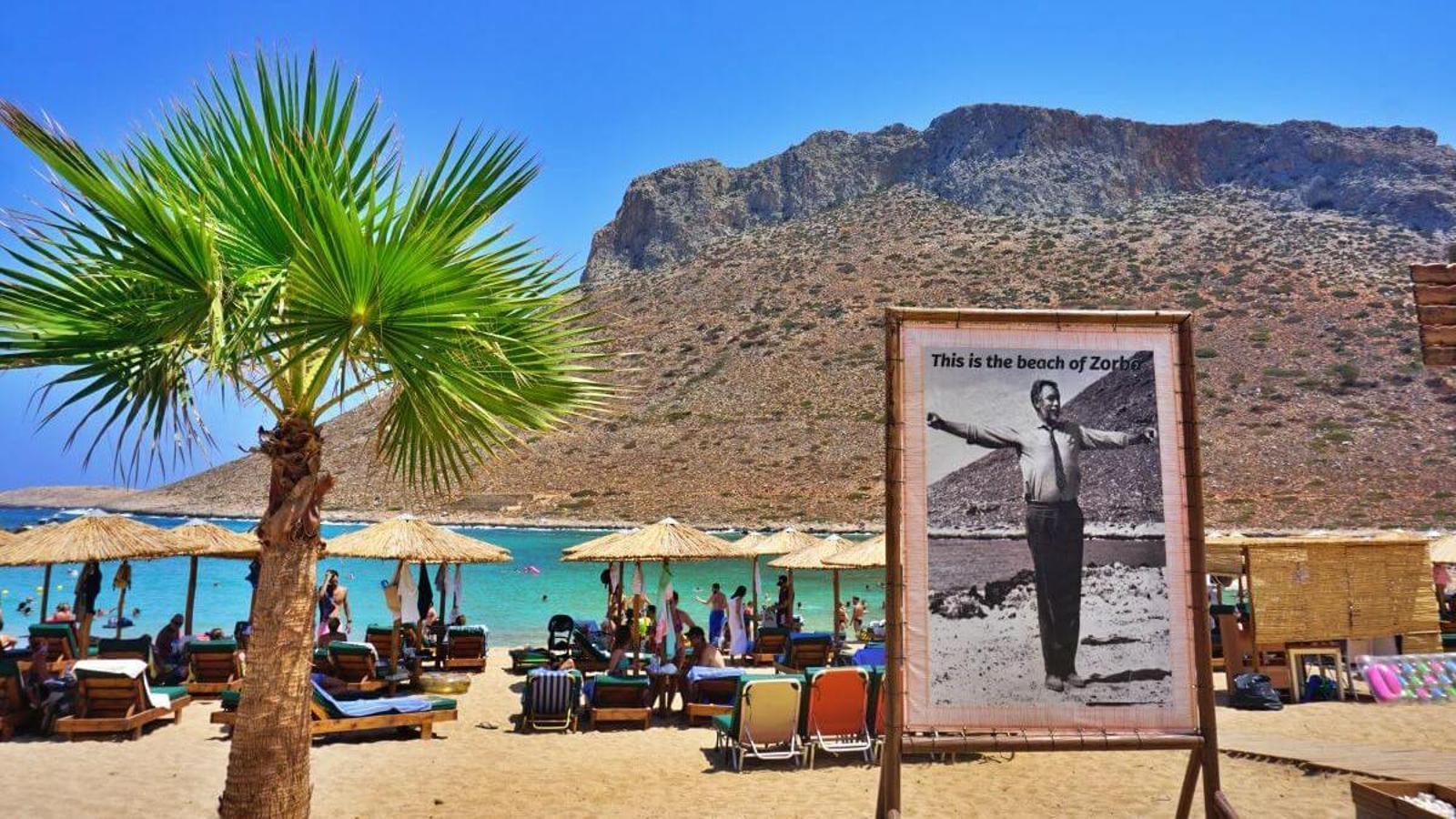A beautiful island, a beach, a dance and the song that created it all


BarcelonaThe beach managers have put up a giant sign and two photographs next to it: Zorba's Beach. The sign is a bit tasteless. And, in fact, the beach's real name is Stavros, but many tourists ignore this. When you travel around Greece, you could make a list of restaurants, bars, businesses, and spots named after Zorba and you'd come up with hundreds.
In 1964, director Michael Cacoyannis released his film Zorba the Greek and was so successful that it shaped the image of Greece for millions of people. Much of the blame went to Anthony Quinn's fantastic performance as Zorba. An actor who, curiously, had nothing Greek about him, having been born in Chihuahua to an Irish father and a Mexican mother. But many people still believe he is of Greek descent, because he played one of the most famous Greeks. In fact, the two giant photographs of Stavros Beach show him, Anthony Quinn, playing Zorba. Also largely responsible for the success was Mikis Theodorakis's soundtrack, especially the central theme christened Zorba's danceThe song that Quinn and Alan Bates dance to in the final scene of the film, when Bates says the famous line "teach me how to dance."
The scene with Zorba teaching Basil, an Englishman who ends up in Crete and falling in love with the people, to dance is captivating. The hypnotic rhythm created by Theodorakis plays, and the two dance a sirtaki on a beach. The scene was so successful that thousands of people around the world wanted to learn to dance the sirtaki, assuming it was an ancient Greek dance. In reality, it wasn't. Giorgos Provias' choreography was invented for the film, adapting steps from traditional styles. But no, sirtaki danced like that didn't exist. Theodorakis created the sirtaki by taking aspects from dances that did exist, such as the syrtos or the hasapiko.
It's surprising that even many Greeks today believe that the sirtaki is an ancient dance, when it actually dates back to 1964. Its success has led Greeks to dance it passionately today, and it has become part of Greek popular culture. The beach where the scene was filmed, Stavros, is a quiet spot on the Akrotiri peninsula, near the city of Chania. A beautiful, fairly peaceful beach, where you can start a tour of Crete. Crete is always a good idea. And, while you're at it, you can read Nikos Kazantzakis's book, since many people forget that the film adapts a fantasy book by one of Greece's greatest writers. A man born inland on the island, in a house that can be visited. Kazantzakis was buried within the walls of Heracli, in a tomb where you can read "I expect nothing, I fear nothing, I am free." Figures like Kazantzakis, Cacoyannis, and Theodorakis created a modern Greece, adapting the precious local tradition to new literary, musical, and cinematic formats. All of them, persecuted by the conservative military, helped give birth to a new Greece with their art. They did it so well that the line between reality and fiction is blurred. And it doesn't hurt to imagine, even if it's false, that 1,000 years ago, fishermen danced the sirtaki on Stavros Beach.
Recommendation for traveling to Crete.
Song: Zorba's dance
Author: Mikis Theodorakis
Year: 1964.
